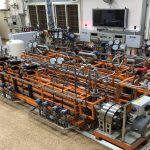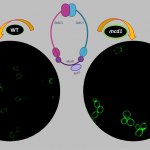Novel Computational Model to Predict ‘Change Blindness’
21 Dec 2021 under FocusSuccessful change detection may be linked to how some people are better at selectively focusing on specific objects Can you spot the difference in the two images above? Our brains have the remarkable ability to pay attention to details but may sometimes fail to notice even marked differences. This phenomenon of overlooking a visual change, […]
Making Coal Cleaner
26 May 2021 under FeaturesA new centre at IISc seeks to address the monumental problem of how to reduce coal’s environmental impact The climate change crisis has put the spotlight on fossil fuels, particularly coal, as a major source of environmental pollution. Coal is the most polluting fuel, but it continues to be widely used – it is India’s […]
Cohesin Helps Maintain Cell Wall in Budding Yeast Cells
05 Jan 2021 under HighlightsMutations in proteins needed to maintain the structure of the yeast cell wall may weaken it, threatening the cell’s survival. A study published in the journal Genetics by researchers at the Department of Biochemistry has explored the role of a protein complex called cohesin. Cohesins attach to various parts of the cell’s chromosomes, and help […]
A Robotic Arm Controlled by Eye-gaze for Speech and Motor Impaired
01 Jul 2020 under FocusRobotic arm manipulated by eye movement using a webcam and computer interface can help people with severe speech and motor impairment People with Severe Speech and Motor Impairment (SSMI) – a condition caused by disorders such as cerebral palsy – find it difficult to physically operate devices such as a joystick, mouse or trackball, or […]
Plant Virus-like Particles to Deliver Therapeutic Antibodies
01 Jul 2020 under HighlightsMonoclonal antibodies are used in immunotherapy to target diseased cells and treat psoriasis, cancer and autoimmune disorders. Delivering them inside a cell, however, requires a vehicle that can cross the cell membrane. Virus-Like Particles (VLPs) have this ability. VLPs have the structural components of a virus but not the genetic material, which makes them non-infectious. […]
Instantaneous Spark Reduction for Wearable Sensors
01 Jun 2020 under HighlightsWearable electronic devices are currently in great demand. 2D nanomaterials such as graphene, with their exceptional electrical and mechanical properties, play a key role in fabricating these devices. Graphene oxide (GO) is a scalable and low-cost alternative to pristine graphene. However, GO is an insulator and needs to be reduced to an electrically conducting form […]
What Should Anti-bacterial Surfaces Be Made Of?
01 Jun 2020 under HighlightsDrug-resistant bacteria often spread through surfaces such as doorknobs, public seats and medical equipment like stethoscopes. Previous attempts to develop antibacterial surfaces, by coating them with chemicals, have led to bacteria becoming drug-resistant. Another approach involves surfaces using photocatalysts such as titanium dioxide (TiO2) which on exposure to UV light generate chemically reactive molecules called […]







